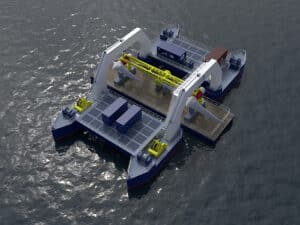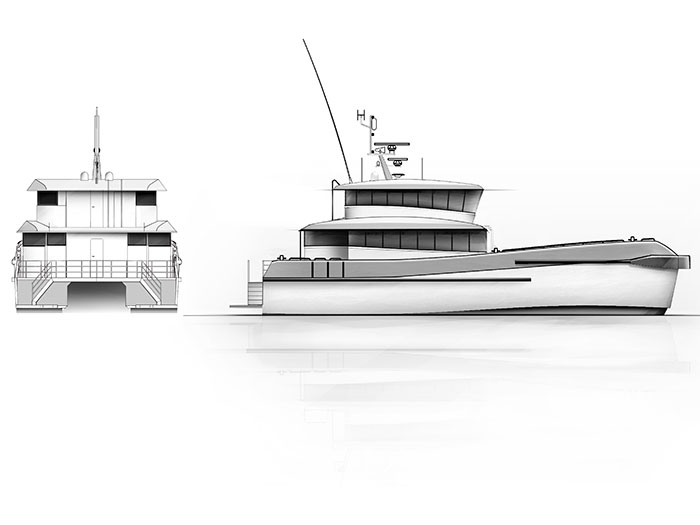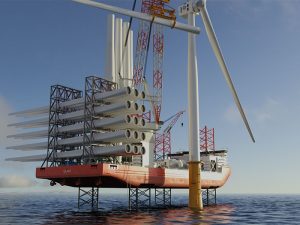
Chartwell Marine develops CTV aimed at U.S. offshore wind market
Written by Nick Blenkey
Chartwell 24
OCTOBER 15, 2018 — Major companies involved in the development of U.S. offshore wind farms need confidence in the availability of proven vessel concepts, as they continue to explore opportunities and justify investment decisions in the growing sector, says Hampshire, U.K., based Chartwell Marine, a pioneer in next generation vessel design involved in the development of the first Crew Transfer Vessels (CTVs) for the U.S. market.
Chartwell says that further collaboration between firms in the supply chain will be essential in ensuring that lessons learnt in design from the mature markets are effectively transposed, and that offshore wind developers and equipment manufacturers have no doubt in the ability of U.S. shipyards and operators to deliver the standard, and volume, of vessel support they need to bring projects to fruition.
Despite the need to create confidence with familiar designs, there is still room for innovation, and substantial opportunities exist for those who can optimize vessels for U.S. market conditions, says Chartwell. In particular, meeting EPA Tier 4 air quality requirements with customized propulsion options, hull and deck designs that stand up to larger Atlantic swells, and the ability to respond to unique development approaches with enhanced logistical support capacity, will be crucial advantages.
“There are a multitude of risks involved in establishing a presence in a new market – particularly for a sector as technologically demanding and complex as offshore wind,” said Andy Page, Managing Director, Chartwell Marine. “So, while major developers and operators have recently given U.S. offshore a huge vote of confidence, their focus is squarely on risk management – and derisking vessel support will be high on the list of prioritie”
“Given the influence of the Jones Act on the production and cost of new vessels – plus stringent environmental and operational requirements – there needs to be a really strong business case for investment,” says Page. “The good news is that the U.S. maritime supply chain is well-placed to respond to this – providing it can maintain an ongoing dialogue with offshore wind firms about their specific needs, and demonstrate a capacity to take proven vessel concepts from the European sector, refine them and apply them successfully in U.S. waters.”
Chartwell has recently developed the Chartwell 24, developed off the back of 10 years of data and experience in offshore wind vessel design. It aims to hit a “sweet spot: in vessel size and capability that has been achieved by the most effective vessels currently operating in the European market.
The vessel, which is capable of carrying 24 industrial personnel alongside 3-6 crew, also offersthe largest CTV foredeck in the market, enhancing its cargo capacity. With four engines, the Chartwell 24 also offers options for hybrid propulsion.
One Response to “Chartwell Marine develops CTV aimed at U.S. offshore wind market”
Leave a Reply
You must be logged in to post a comment.





June 11, 2019 at 5:41 pm, Chartwell to design hybrid for U.S. East Coast operation - Marine Log said:
[…] Chartwell Marine unveiled a crew transfer vessel design aimed at the U.S. offshore wind market (see earlier story). Now the firm reports that it has been selected to design a new low-emission hybrid catamaran […]